Educator Tatum Omari examines the system of educator collaborations and partnerships.

Educator Tatum Omari examines the system of educator collaborations and partnerships.


这个思考模式鼓励学生能够慢下来,仔细观察其中一个系统。通过这样帮助学生更好地认识具体系统里无论是直接或间接相关的人物,学生也会注意到系统里任何一点变化,也许都会有意无意地影响到系统的其它方面。
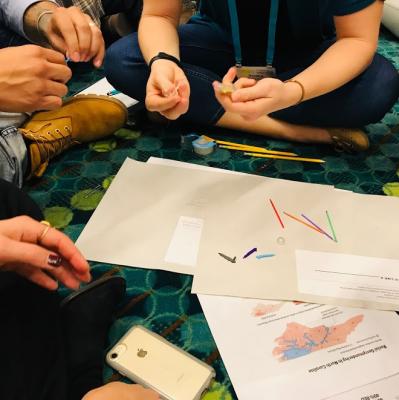
This piece is based on a workshop titled “Taking Apart Racism: Using Maker-Centered Practices to Break Down Systems of Oppression,” led by Jaime Chao Mignano and Mark Perkins at the National Association of Independent Schools People of Color Conference (PoCC).
Like a lot of educators, I want my students to be empowered to impact the world around them. I want them to have social and political agency in a sense that is perfectly aligned with what Agency by Design means by agency—that is, skills and tools in combination with intention and impulse to action. When I task my students with dismantling systems of oppression, how do they know what that means? Do they feel ready to enact it? And how can I be a support?
This was the seed of a workshop for this year’s National Association of Independent Schools People of Color Conference (PoCC), a gathering of thousands of educators from around the United States to explore ideas and share experiences around equity and justice in our schools and lives. My colleague, Mark Perkins (Media and Theater Coordinator), and I wondered what insights we could offer by putting Take Apart practice in service to racial justice education. I was nervous to try to build under the conference throughline “Anti-Racist Teaching Tools” - the stakes felt so high. We had an inkling, though, that combining the enthusiastic engine of taking stuff apart with the resonant act of creating stories that reimagine existing narratives of power could be an important experiment.
Mark and I built a workshop we call “Taking Apart Racism: Using Maker-Centered Practices to Break Down Systems of Oppression.” The heart of the workshop is the idea that looking closely and exploring the complexity of an object can create a bridge of metaphor that helps us understand a system of racial oppression. If we build the connection between these two systems—the system of the object and the system of oppression—then we can see the oppressive system in a new light and probe new possibilities.
Since 2012, the Agency by Design research team at Project Zero has explored the promises, practices, and pedagogies of maker-centered learning in a variety of settings. This initial research produced a flexible pedagogical model that supports young people in becoming sensitive to design and seeing themselves as the creators of their worlds. Beginning in 2018, the Agency by Design research team began working with a cohort of early childhood educators in Hong Kong on a pilot study to adapt the Agency by Design framework for young learners. The result of this exciting work is the Maker-Centered Learning Playbook for Early Childhood Education. This playbook includes lessons learned from the study, pictures of practice, and a host of educator tools and resources designed to support the development of young students’ maker capacities while also nurturing other generative cognitive dispositions and habits of mind at this early stage of learning and development.
This resource is available in hard copy on Amazon.

The Agency by Design Inquiry Cycle has been designed to support educators in the processes of designing, documenting, assessing, and reflecting on maker-centered learning. This tool was collaboratively developed over time, and formally prototyped with cohorts of maker educators in two locations: Oakland, California, and Pittsburgh, Pennsylvania. In this paper, Agency by Design researchers Jessica Ross and Edward P. Clapp loosely use the structure of the Inquiry Cycle to describe the iterative process of developing this tool, along with some suggested implications for practice. Throughout the piece, we share the experiences of our teacher partners as they grappled with this tool—tweaking, hacking, and remixing it—as they explored its potential for designing, documenting, assessing, and reflecting upon their work in the maker-centered classroom.
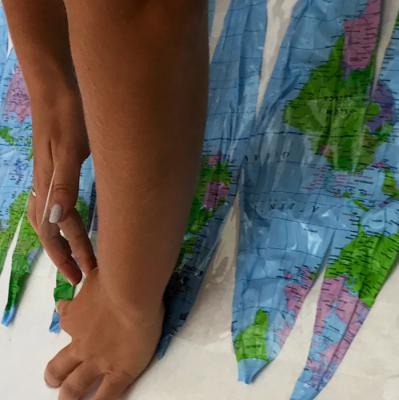
This piece is the first in a series of Field Notes which can be read as a Take Apart Toolkit of sorts, including how to use Take Aparts to engage in deep analysis, to increase accessibility, to explore the complexity of less tangible objects and systems, and more.
Cracking the case of a computer always inspires a small gasp—an intake of breath that is part fear and part wonder. And it really is beautiful in there.
 For that matter, so are the guts of a blender or a blow dryer or an FM radio. When I first started using Take Apart practices in the classroom, it was for the simple unwrapping of the incredible miniature landscape inside of the familiar objects that we think we understand most intimately. The view from the inside is a powerful and nearly instantaneous entrypoint into what Agency by Design names a sensitivity to design—that the world around us is designed and made by humans like us, and can be remade, too.
For that matter, so are the guts of a blender or a blow dryer or an FM radio. When I first started using Take Apart practices in the classroom, it was for the simple unwrapping of the incredible miniature landscape inside of the familiar objects that we think we understand most intimately. The view from the inside is a powerful and nearly instantaneous entrypoint into what Agency by Design names a sensitivity to design—that the world around us is designed and made by humans like us, and can be remade, too.
Over time, I came to think of a Take Apart a perfect first dip into maker-centered learning for learners of any age or context because it requires very little prior knowledge. When I’m guiding a group of learners, I like to ask: Look at the object in front of you—do you know its name? Have you ever used it? Most of us can stare down a clock with some level of confidence and firsthand experience. We have a connection to an object we recognize and ready access to what we already know about how it is used, some alternative forms it may have, and even some ideas about how it works. We have memories that may connect it to our home, the Kindergarten teacher who taught us how to tell time, the last clock we touched. A Take Apart has an emotional locomotion that is hard to resist.
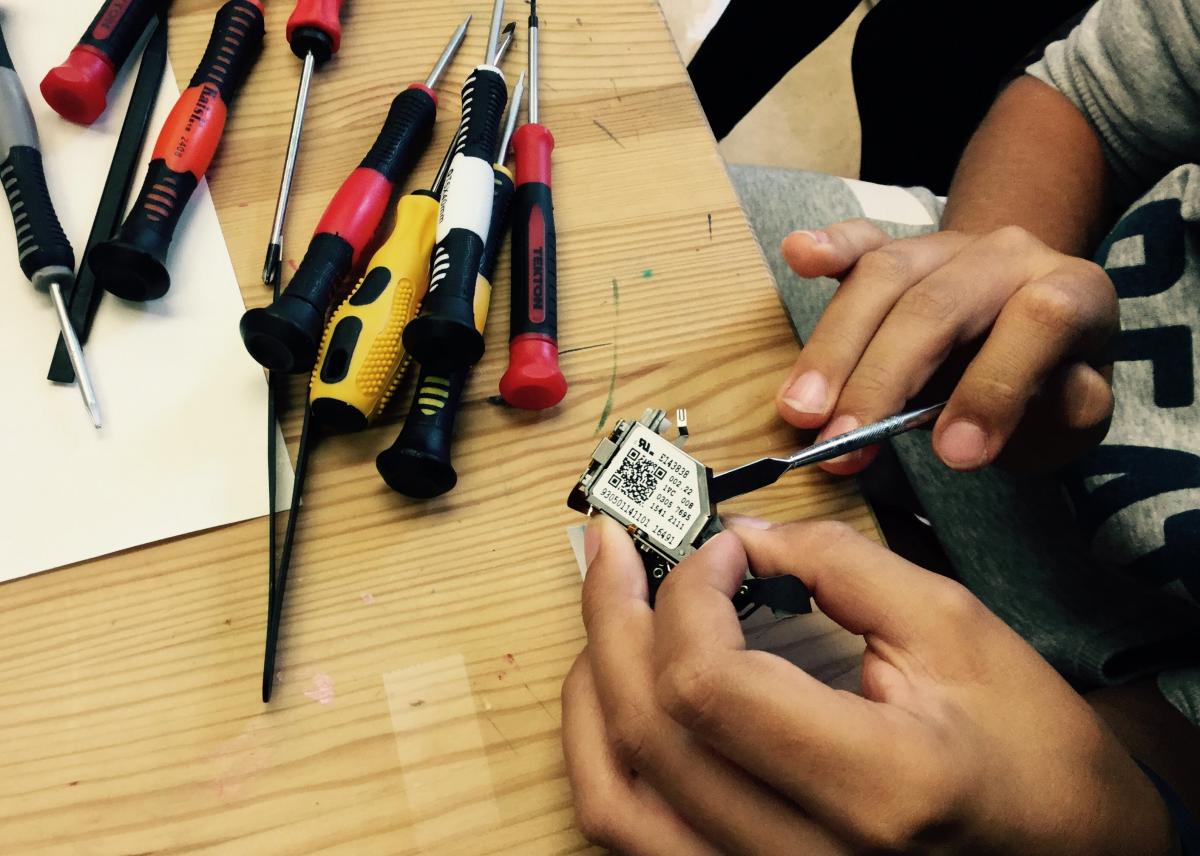 A first, essential step is looking closely—slowly observing and reflecting on the whole. One of the key requirements of a Take Apart, and one that I share with learners, is this important permission: You will not be asked to put it back together. You do not need to preserve it. Once the clock is really Taken Apart, it does not go back together, literally or conceptually. It is a plastic rain poncho that can never be stuffed back into its perfect tiny pouch. When we unpack the parts and complications of the clock—when we explore complexity—our understanding of it balloons out dimensionally.
A first, essential step is looking closely—slowly observing and reflecting on the whole. One of the key requirements of a Take Apart, and one that I share with learners, is this important permission: You will not be asked to put it back together. You do not need to preserve it. Once the clock is really Taken Apart, it does not go back together, literally or conceptually. It is a plastic rain poncho that can never be stuffed back into its perfect tiny pouch. When we unpack the parts and complications of the clock—when we explore complexity—our understanding of it balloons out dimensionally.
Permission to break things is a visceral release, and the small shock of cracking the case of a clock marks that crystal moment of transgression. “No going back now,” some learners might say, or “Is this what I’m supposed to do?” They have entered forbidden territory.
The real processing begins when learners' hands are deep in the guts of the clock and a flurry of questions and inferences rise out of their inherent curiosity. It can get wild in there, and conversations and observations help make order and meaning of what they find. I like to prompt, What do you see? What words or numbers can you find? How are things connected? How does it work to move the hands? As pieces start to come out onto the table, I ask: Sort them in a way that makes sense to you. Is it the way they fit together on the inside? Is it by size or color? What way explains the clock best?
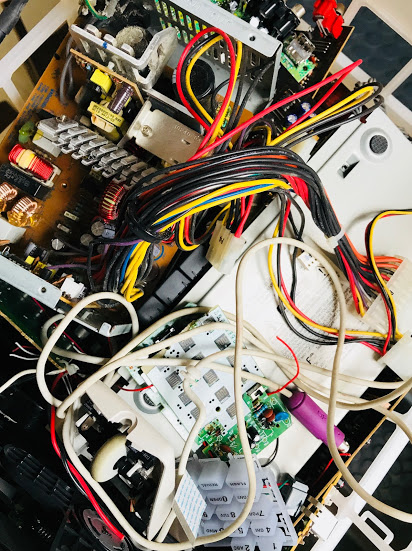
When everything is out, when it is arranged as a representation of our understanding of the clock, it has changed irreversibly. It is broken, for sure, but it is also now physically and conceptually larger than it has ever been. Reflection can make visible how learners’ understandings of the clock and their thinking about it have grown. They can teach what they have learned, or explain a moment of surprise where what they thought they knew about the clock was upended. I often invite my students to consider the following: What was hard about taking it apart, physically or emotionally—and what does that mean? What was hard about explaining its workings? What puzzles remain?
Then finding opportunity becomes a natural next step. Often, learners will ask me if they can keep a piece of this clock. I might ask: Why this piece? What do you want to do with it? What should be thrown away, and what is just too interesting?
In the past year, the Making Across the Curriculum project at Washington International School has supported our faculty to dig into an exploration of what Take Apart practices might look like in a classroom. The curiosity and enthusiasm of students during a Take Apart is often the most obvious impact, but we are also trying to identify more subtle evidence of student understanding.
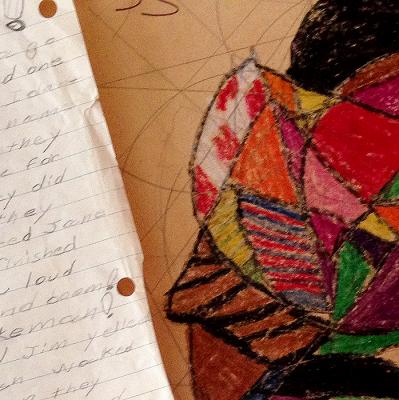
AbD researcher Jessica Ross elaborates on her role in the Open Portfolio Project by asking the question: What advice can we offer young makers as they document their making throughout their lifetimes?

This routine helps students explore complexity by encouraging them to look closely at the details of something, considering its various viewpoints, users, and stakeholders, and reflecting on their own connections and involvement with it.
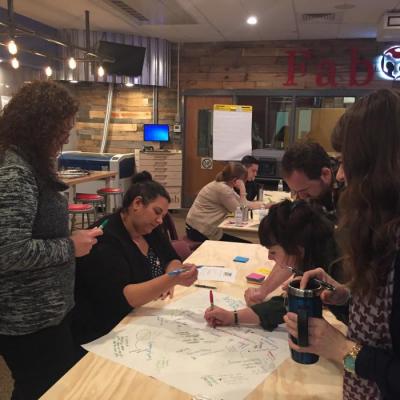
Guest Author Jeff Evancho, the Project Zero Programming Specialist at the Quaker Valley School District, describes the process of establishing the Pittsburgh Maker Educator Learning Community, including the community’s interest in developing documentation and assessment strategies for the maker-centered classroom.